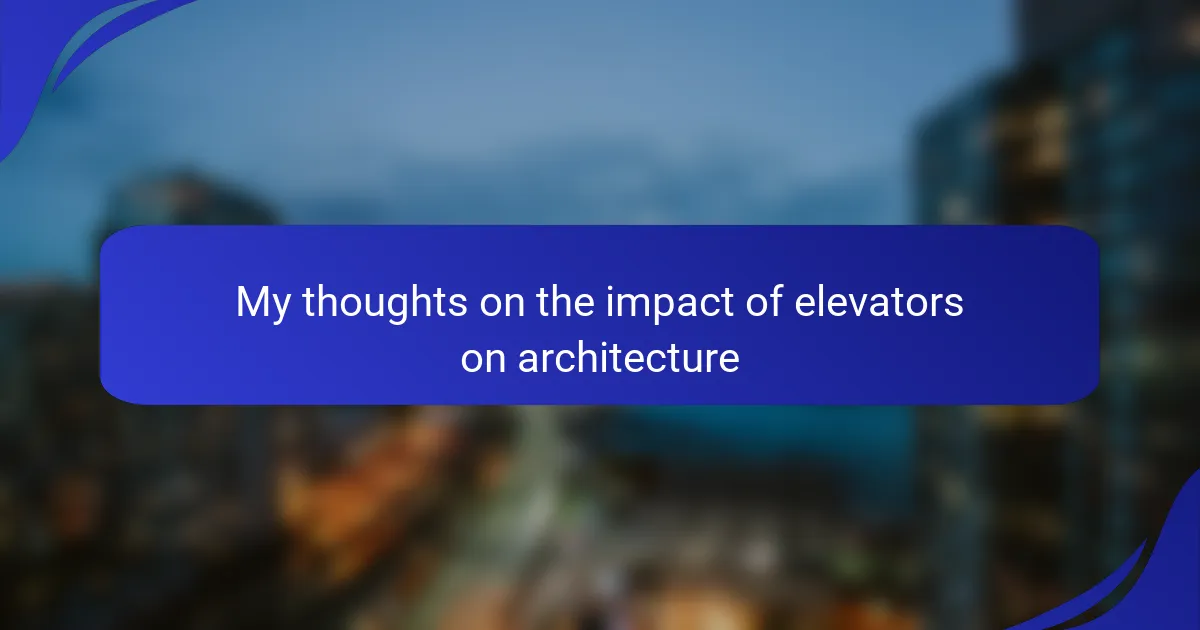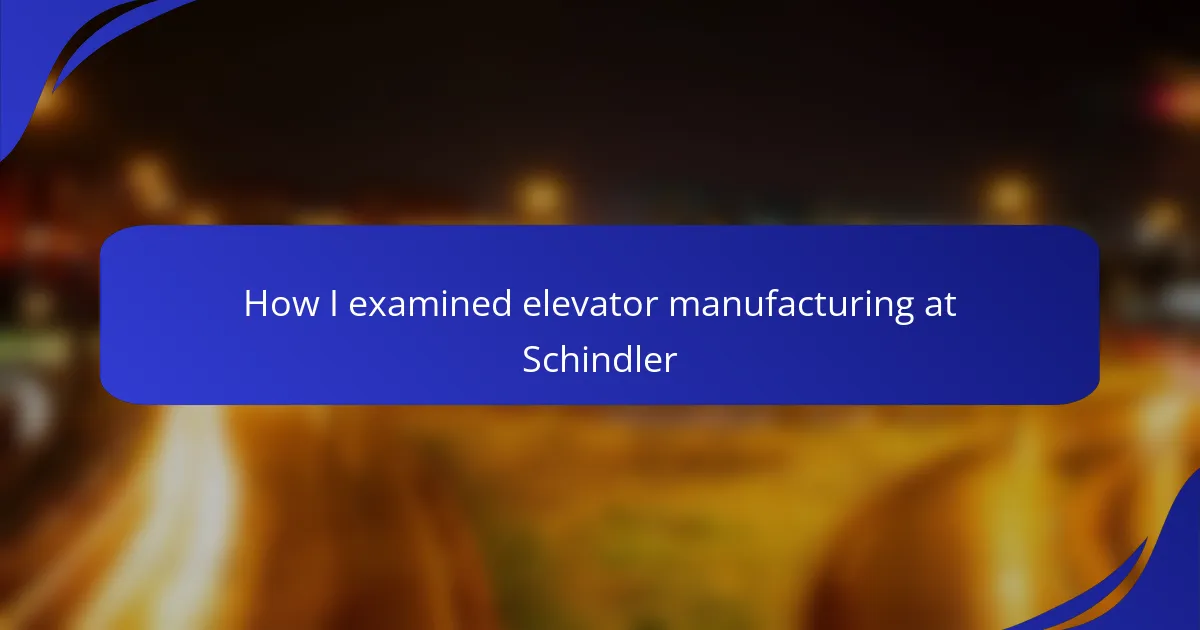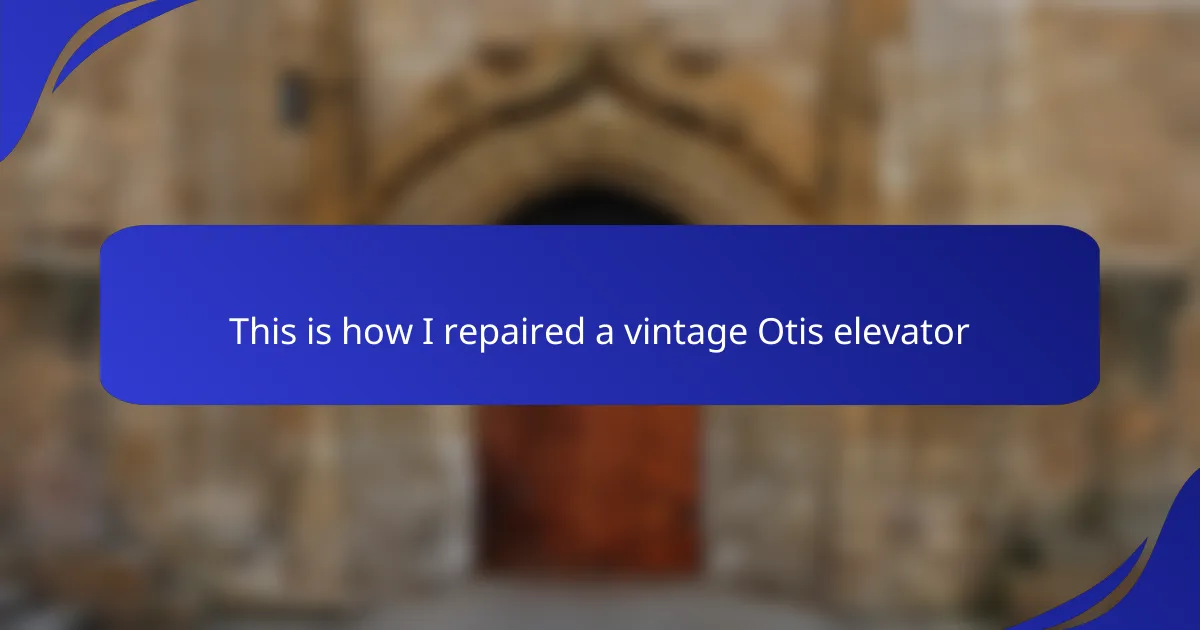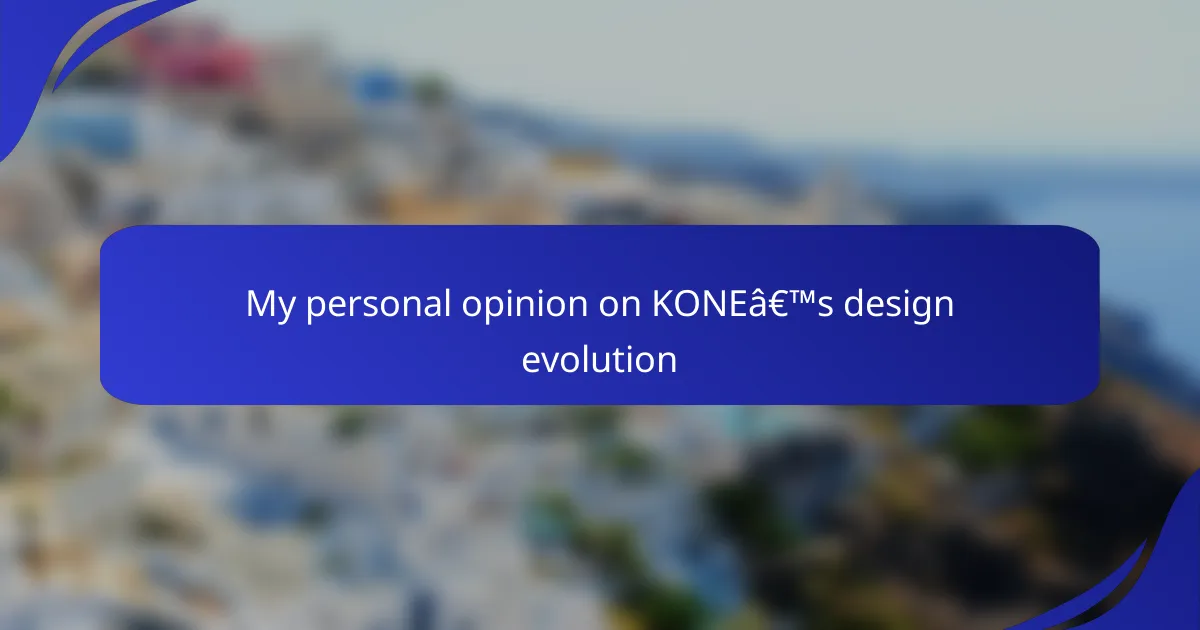Key takeaways
- Elevators have evolved from simple freight lifts to essential components of modern architecture, enhancing accessibility and design possibilities.
- Key milestones, such as the Otis Safety Brake and the advent of electric elevators, have revolutionized urban landscapes and building heights.
- Modern elevator trends focus on sustainability and smart technology, improving efficiency and user experience in urban environments.
- The future of elevators is promising, with advancements like AI integration and solar-powered systems transforming them into focal points of architectural design.
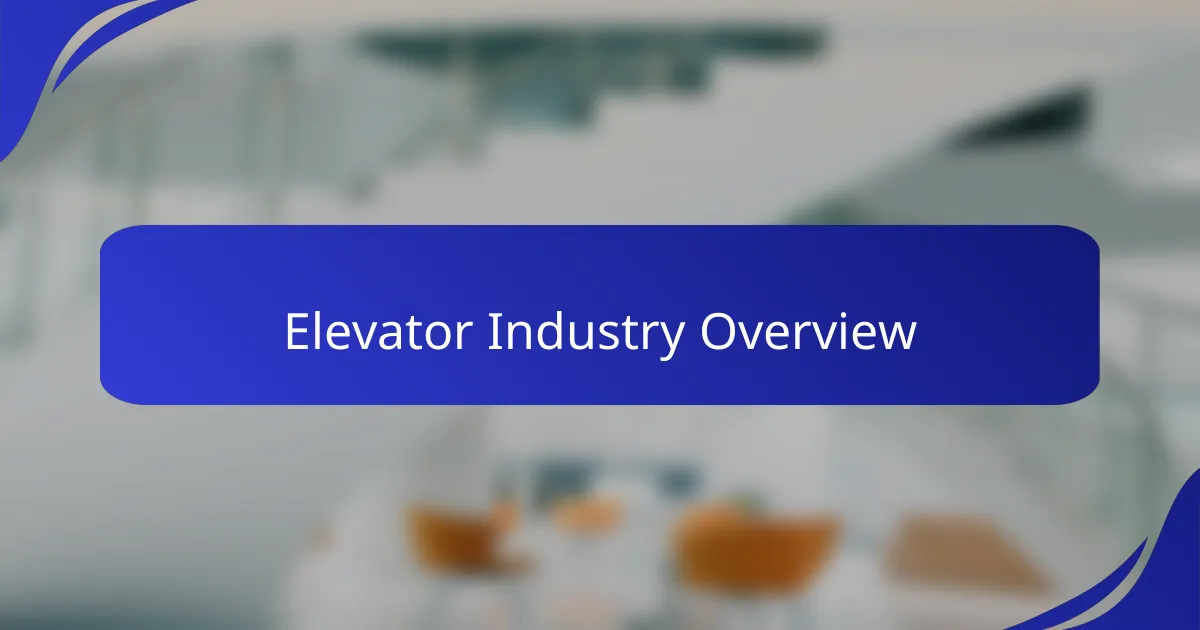
Elevator industry overview
The elevator industry has transformed the way we perceive and utilize spaces in architecture. I remember my first experience in a towering skyscraper, feeling the smooth ascent and marveling at how these machines have opened up vertical horizons in urban environments. Elevators not only increase accessibility but also influence design choices, allowing architects to push boundaries and create spaces once deemed impractical.
When we think about the elevator’s role in building design, it’s important to consider its history and how it has evolved over time. In the early days, elevators were primarily used for freight; now, they’re an essential part of our daily lives, seamlessly integrating into the fabric of modern architecture.
| Aspect | Early Elevators | Modern Elevators |
|---|---|---|
| Purpose | Freight and basic transport | Passenger transport and accessibility |
| Technology | Steam-powered, rudimentary controls | Digital controls, energy-efficient designs |
| Building Design Impact | Minimal integration in structures | Catalyst for skyscraper and complex designs |
| Accessibility | Limited | Universal, accommodating diverse needs |
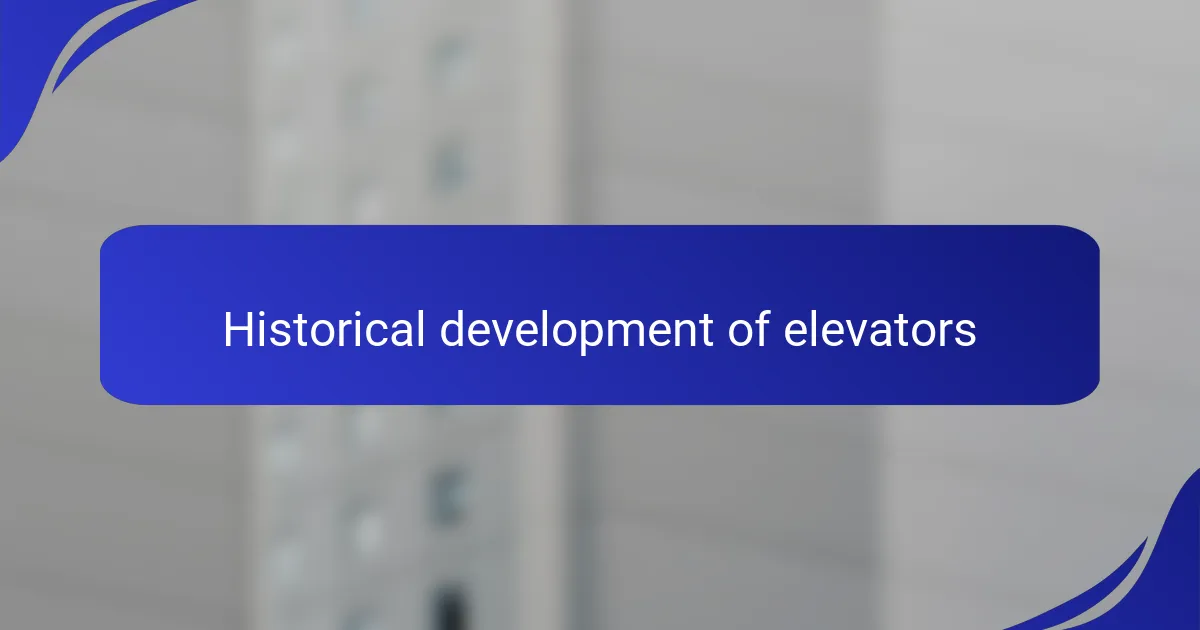
Historical development of elevators
In the 19th century, elevators began their journey beyond simple hoisting mechanisms into something much more transformative. I imagine the excitement of passengers stepping into an elevator powered by steam, marveling at the innovation of the time. This leap from freight transport to passenger use marked a significant turning point in architectural possibilities, as buildings could now soar higher than ever before.
As the technology advanced, so did our expectations. The introduction of electric elevators in the late 1800s revolutionized urban spaces, enabling architects to dream up skyscrapers that pierced the skyline. I often ponder how these early innovations shaped not just the buildings we see, but also the urban landscapes we inhabit today.
By the early 20th century, elevators were no longer just functional; they became integral to a building’s identity. Today, I find it fascinating how modern elevators blend seamlessly into a structure’s design, enhancing its overall aesthetic while also ensuring accessibility. This evolution of elevators reflects broader societal changes, prompting me to consider how they redefine our experiences within architectural spaces.
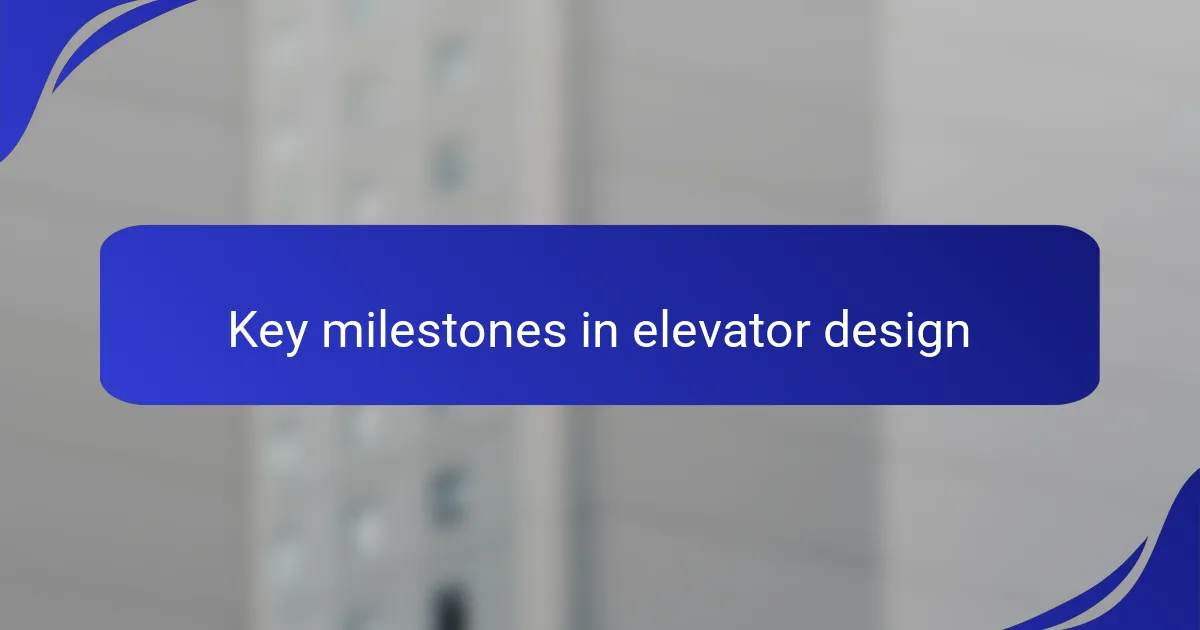
Key milestones in elevator design
Key milestones in elevator design have greatly influenced both the functionality of buildings and the way we experience vertical spaces. The introduction of safety features, such as the safety brake developed by Elisha Otis in the 1850s, marked a significant turning point. I often marvel at how this innovation not only made elevators safer but also instilled public confidence in these rapid transport systems, allowing skyscrapers to rise in cities worldwide.
The development of hydraulic elevators in the late 19th century further changed the landscape of architecture. I remember visiting an old factory building with original hydraulic systems still in place, which reminded me of the industrious spirit of that era. These elevators enabled taller structures, pushing architectural limits and changing urban skylines, which I find quite fascinating.
Another transformative milestone was the advent of electric traction elevators in the late 1880s. This technology opened the door for even taller buildings, fundamentally shifting architectural paradigms. Reflecting on this, I can appreciate how each phase of elevator design has not just improved convenience but also redefined our urban environments.
| Milestone | Year |
|---|---|
| Otis Safety Brake | 1853 |
| Hydraulic Elevators | Late 19th Century |
| Electric Traction Elevators | 1880s |
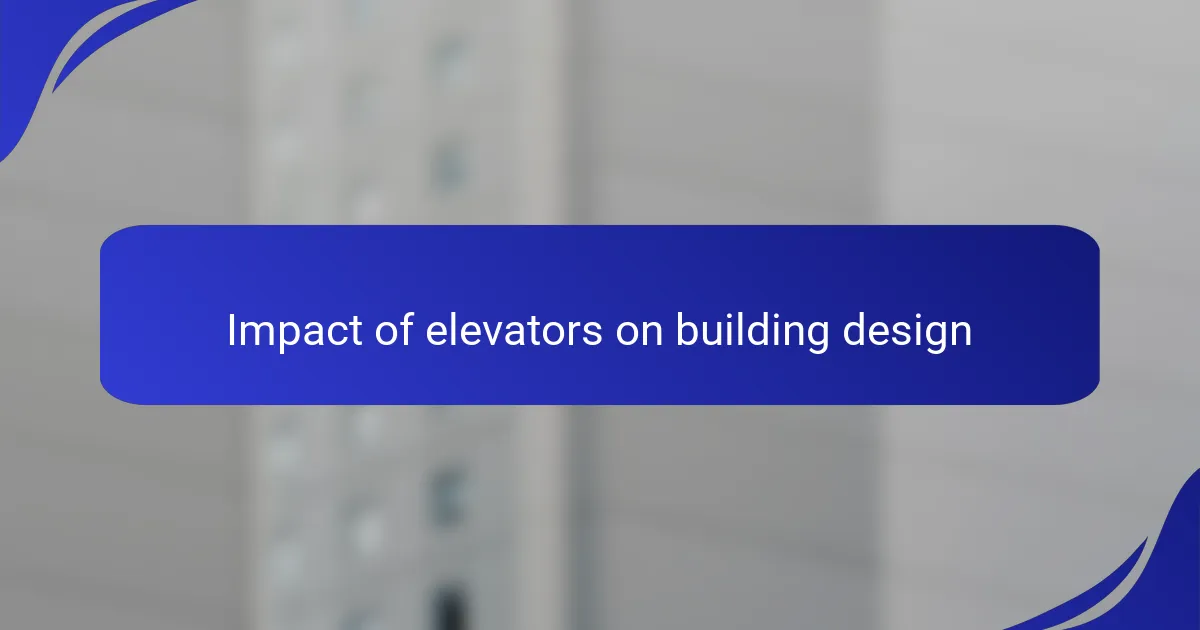
Impact of elevators on building design
Building design has been deeply influenced by the presence of elevators. I often reflect on how their integration allows architects to think both vertically and creatively. For instance, when designing a high-rise, elevators determine floor layouts, enabling open spaces and expansive views. Isn’t it intriguing how a simple machine can reshape the very concept of a building?
Elevators have also catalyzed the need for more sophisticated architectural features. In many modern structures, you’ll notice how atriums or glass walls are designed around elevator banks to enhance both aesthetics and functionality. Personally, every time I enter a building with a striking elevator system, it feels like I’m stepping into a work of art. It makes me wonder, how many designs we take for granted are actually shaped by these unassuming yet pivotal devices?
Moreover, the evolution of elevators has created opportunities for sustainable design practices, such as energy-efficient systems and smart technology integration. I remember visiting a newly constructed eco-friendly office where elevators utilized regenerative drives. This not only reduced energy consumption but also added a unique narrative to the building’s identity. How incredible is it that elevators contribute to sustainability while redefining architectural beauty?
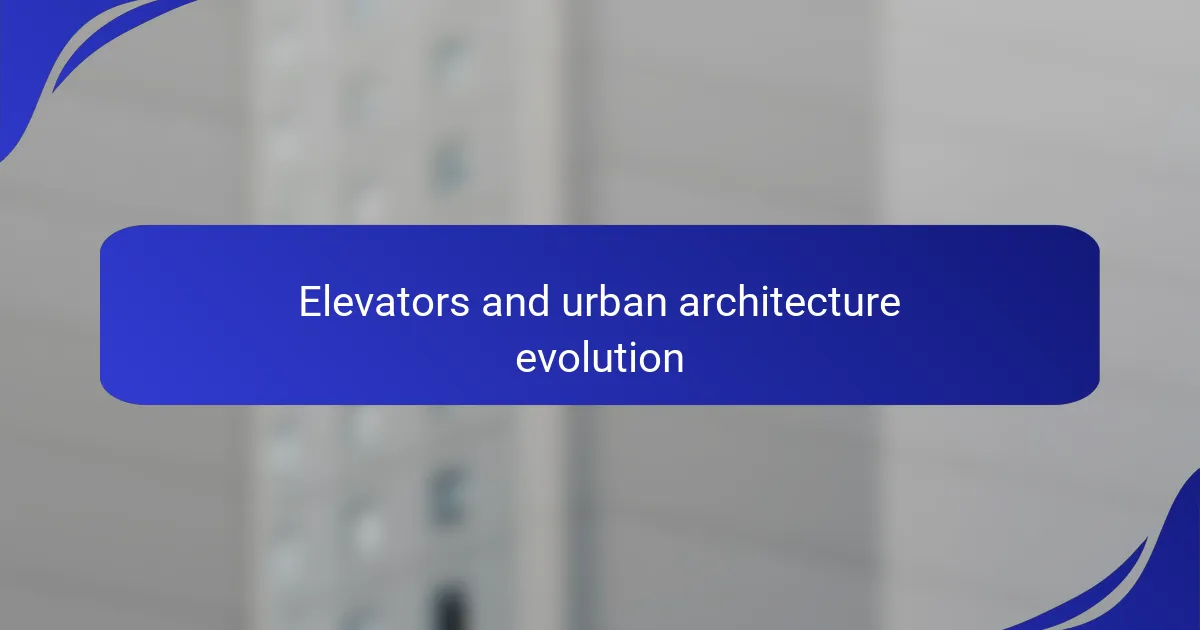
Elevators and urban architecture evolution
Elevators have undeniably transformed urban architecture, fostering a new era where verticality reigns supreme. I still vividly recall the awe I felt stepping out onto an observation deck for the first time, marveling at cities that stretched endlessly beneath me. This vertical expansion has revolutionized our skylines, turning them into showcases of human ingenuity where once low-rise buildings dominated the landscape.
As I ponder the evolution of contemporary skyscrapers, I realize that elevators have become more than mere utilities; they are the lifeblood of urban design. In many new buildings, designers creatively incorporate elevators as focal points, integrating them into the overall aesthetic. I often find myself admiring how some developments feature transparent shafts, allowing glimmers of movement and life to enhance the architectural narrative. Isn’t it fascinating how these once-humble machines have redefined our experiences of space?
The increasing demand for efficient transportation within these towering structures has also led to innovations that mirror our evolving societal values. For example, I’ve experienced elevators equipped with advanced controls that optimize travel time and energy use, creating a frictionless connection between floors. It’s thought-provoking to think about how the integration of smart elevator technology not only enhances convenience but also reflects our commitment to sustainability in urban planning. These aspects compel me to consider just how deeply interconnected our lives have become with the designs of our cities.
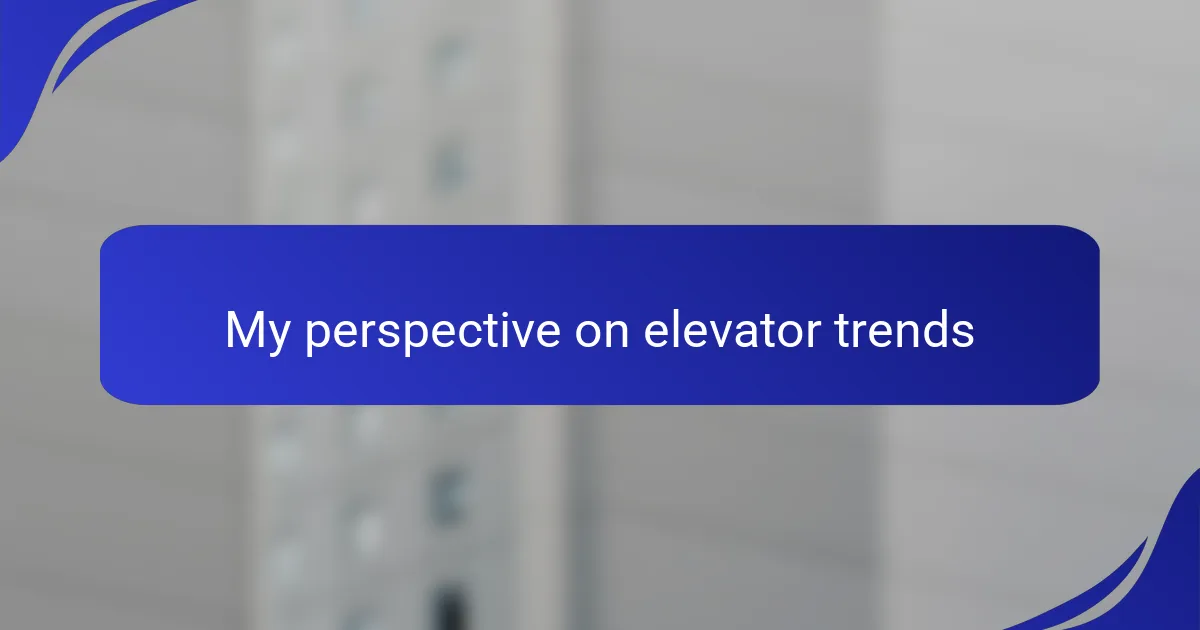
My perspective on elevator trends
Elevator trends are fascinating, revealing a lot about how society perceives vertical living. I often think about how the integration of smart technology is reshaping my expectations whenever I step into an elevator. These advancements not only improve efficiency but also enhance user experience. Have you ever noticed how some elevators now feature touchless controls or voice activation? It’s remarkable how these innovations can make a simple ride feel so much more modern and engaging.
Sustainability has also become a key trend in the elevator industry, and it’s something I resonate with personally. In my visits to eco-friendly buildings, I’ve come across elevators powered by renewable energy sources. This not only reduces the carbon footprint but also tells a story about a building’s commitment to the environment. It’s a pleasant surprise to see how elevators, once viewed primarily as utilities, can contribute positively to a building’s sustainability narrative. Isn’t it exciting to think about how this trend will evolve in the coming years?
Moreover, the concept of “smart” buildings is transforming the architectural landscape, and elevators play a pivotal role in that shift. I’ve experienced the convenience of buildings where elevator systems communicate with smartphone apps, optimizing travel and reducing wait times. It makes me wonder—how much further can this technology evolve? With artificial intelligence on the rise, I believe we’re just scratching the surface of what’s possible, blurring the lines between technology and our daily experiences in urban environments.
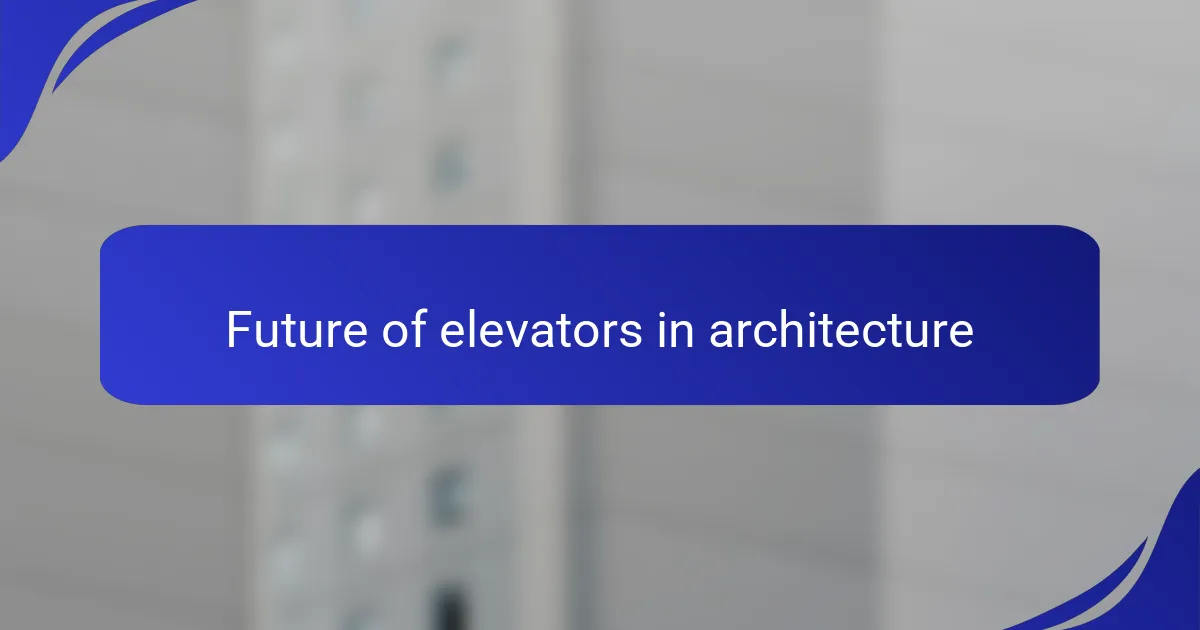
Future of elevators in architecture
The future of elevators in architecture is incredibly exciting and full of potential. I often think about how advanced technologies like artificial intelligence and machine learning will reshape our experiences in the coming years. Imagine stepping into an elevator that not only recognizes your destination but also suggests the best route based on traffic patterns in the building. How cool is that?
As we move towards more sustainable designs, I can’t help but remember visiting a building where the elevator system harnessed solar energy to operate. It struck me how these innovations are not just about functionality but also about creating a narrative that aligns with environmental consciousness. The thought that elevators can contribute to a greener planet is empowering, don’t you think?
Looking ahead, I see elevators becoming focal points in architectural design rather than just functional elements. I often find myself captivated by designs that showcase elevators as pieces of art—transparent lifts that offer breathtaking views while moving through a space. How will future architects use these machines to further enhance the user experience and the storytelling of their designs? The possibilities are limitless, and that’s what truly excites me.
